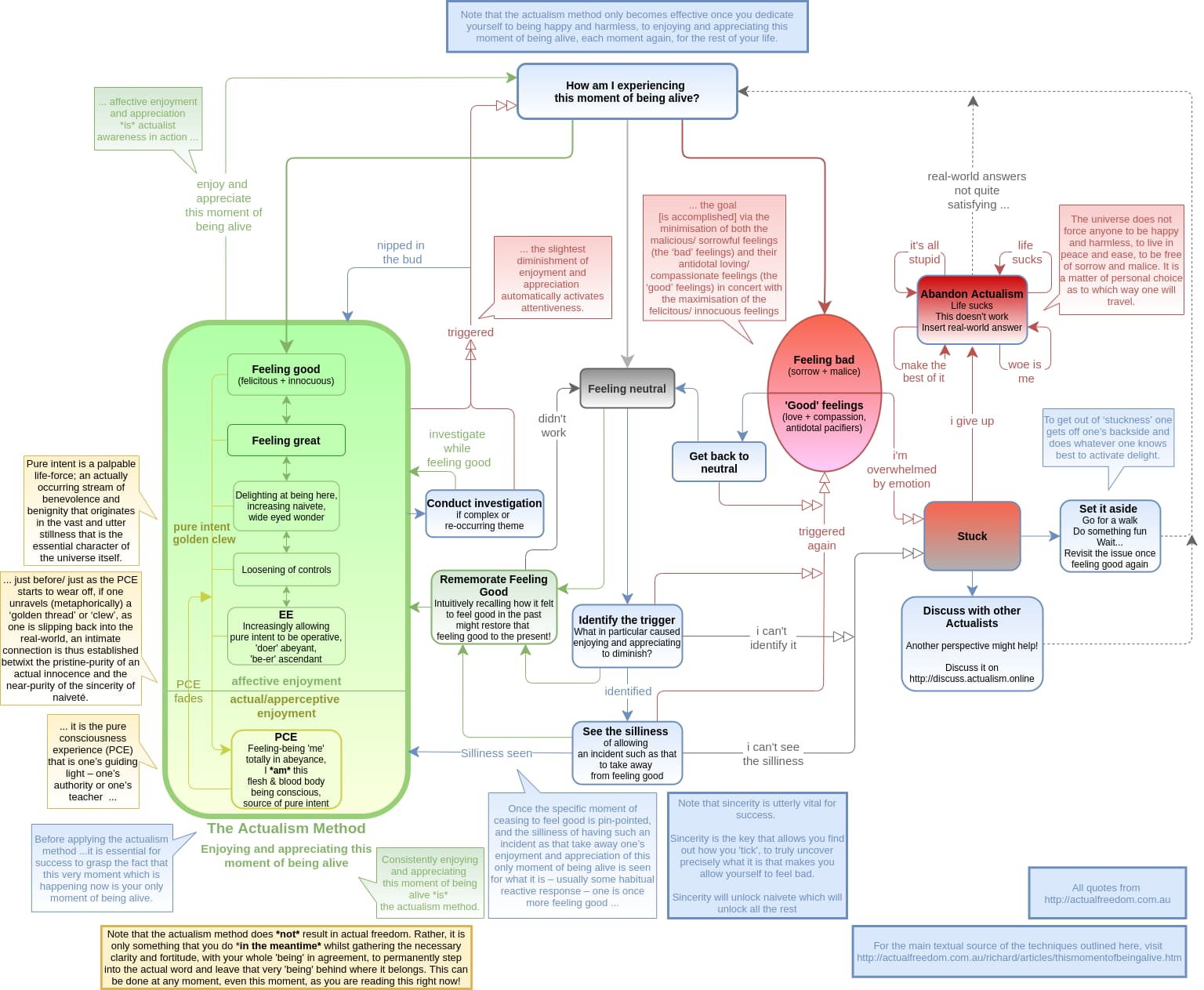I’ve incorporated @Miguel and some of @FrankN 's suggestions here:

Also added a few more quotes related to pure intent!
I reached out to Vineeto and she said she’d be happy to link to the diagram. I made a resource page and will ask her to link to that, where a post is edited to have the latest version of the diagram, so as the charts get updated she won’t have to update the link each time.
Her suggestions were to add the notes at the beginning and the end, which I’ve incorporated as well.
About the red colors, I am torn – on the one hand I like the call-outs having the same color as the relevant topic. On the other I see what you mean about it being ‘scary’. But on the third hand, the point isn’t to be afraid of ‘good’ or ‘bad’ feelings – but rather to embrace the fact that we experience them, to not try to suppress it, etc. To which end, it might end up working out and be helpful, as the text in the red parts is not ‘scary’ but rather helpful ![]() .
.
Keep the suggestions coming in! I don’t appear to be near the end point of being willing to keep improving them ![]() .
.